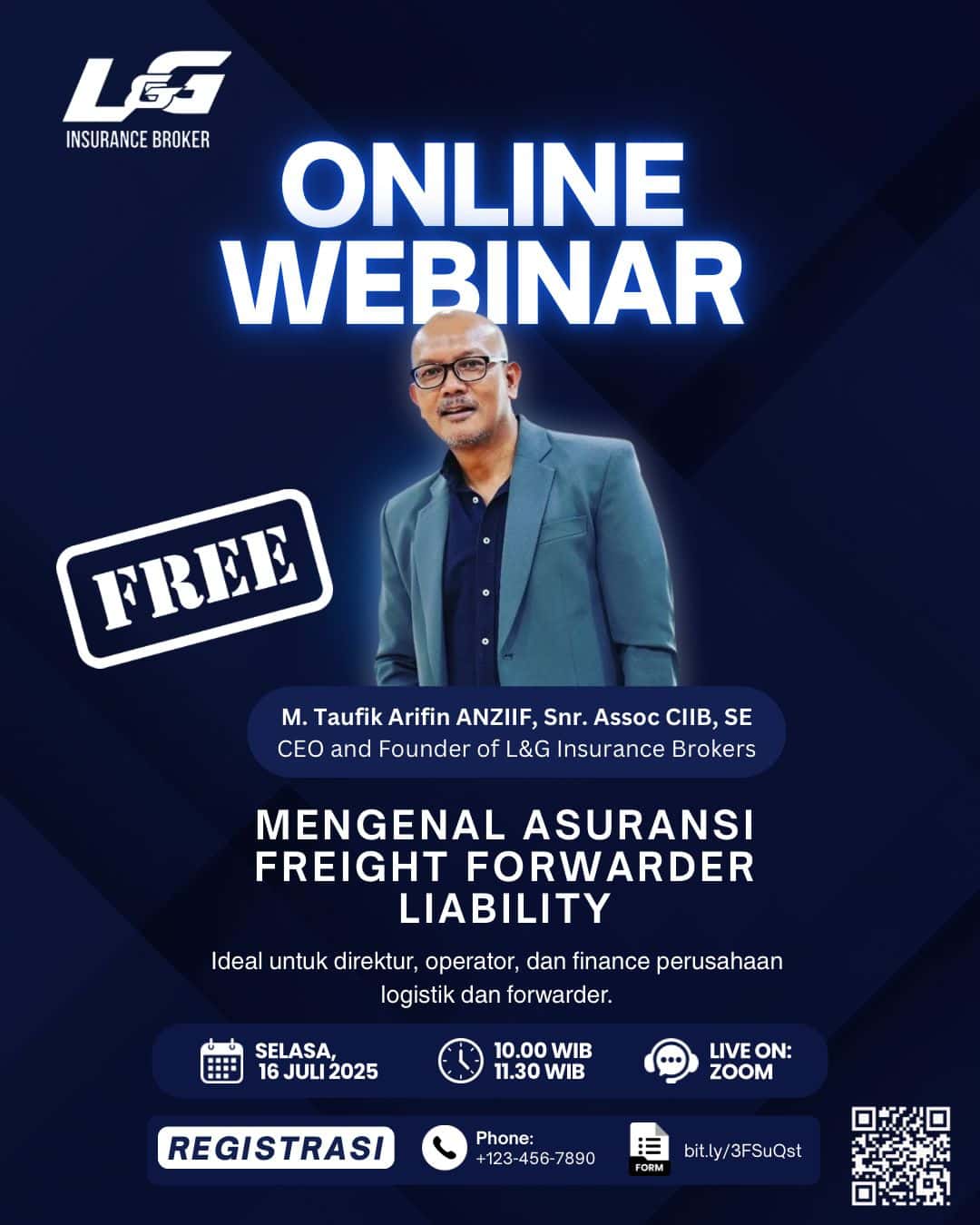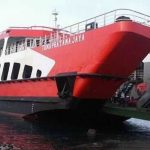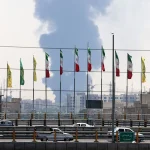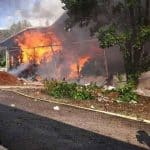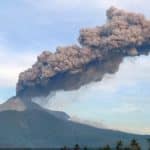Liga Asuransi – Dear readers, how are you? I hope you and your family are doing well.
Last week we were shocked by the news from North Sumatra, Indonesia, that a woman named Asiyah Shinta Dewi was found dead under an elevator at Kualanamu Airport.
The victim fell from the elevator on April 24, 2023. While in the elevator, the victim called her nephew, informing him she was trapped in the lift before the phone went off.
Since then, she could not be contacted. The family kept chasing her until they received a call from the airport’s officers informing them that the victim’s body had been found under the elevator on April 27, 2023, 3 days after her last call.
As a senior insurance broker, I am sorry to hear about the tragic Kuala Namu International Airport accident. It is essential to approach the incident with sensitivity and compassion for the victims and their families.
If you find this article interesting, please share it with your friends and the persons directly involved in this case.
LIFT ACCIDENTS AND INSURANCE REVIEW
Let’s have a pre-risk assessment of the case, hoping they can assist the parties involved in finding the solution.
Several factors must be considered to analyze the accident from an insurance perspective.
Firstly, it is crucial to determine the cause of the accident and who is liable for the damages. If the accident was caused by negligence by the airport or lift operators, they may be held responsible for any resulting injuries or deaths.
Regarding insurance coverage, the airport and lift operators should have liability insurance to cover such incidents. They may include coverage for medical expenses, loss of income, and other related costs. Additionally, the victims and their families may be entitled to compensation through travel insurance or personal accident insurance policies, depending on the terms and conditions of their policies.
It is also important to review the airport’s safety protocols and procedures to prevent similar accidents from happening in the future. There may include regular inspections and maintenance of lifts and other equipment and proper training for operators and staff.
Ultimately, the goal is to ensure that those affected by the accident receive the support and compensation they need to move forward. While no insurance coverage can ever fully compensate for the loss of life or severe injury, it is essential to ensure that all parties involved are treated fairly and justly.
ABOUT KUALA NAMU AIRPORT
Kuala Namu International Airport is a major Indonesian airport located at Deli Serdang, North Sumatra; The airport was opened in 2013 to replace the old Polonia International Airport in Medan, which was considered outdated and unable to accommodate the growing number of passengers.
Kuala Namu Airport has a capacity of up to 8 million passengers per year and is designed to meet international safety and security standards. The airport has a modern design with state-of-the-art facilities, including a 5-story terminal building, numerous boarding gates, and parking lots.
Regarding safety and security, Kuala Namu Airport has implemented several measures to ensure the safety of passengers and airport personnel. These measures include regular safety inspections, fire safety systems, and security cameras throughout the airport.
PASSENGER LIFT OPERATION SAFETY MANUAL
The safety and operation manual for passenger lifts at the airport is a critical resource for ensuring the safe and efficient operation of the lifts.
By following the guidelines and procedures outlined in the manual, airport staff can help to minimize the risk of accidents and ensure that passengers are transported safely and efficiently.
Here are some of the key components of a typical safety and operation manual for passenger lifts at the airport:
- General Information
The manual section provides basic information about the passenger lifts, including their purpose, specifications, and operating conditions. It may also include information about the various types of lifts and their configurations.
- Safety Precautions
The section outlines the safety precautions to be taken when operating the lifts, including warnings about potential hazards and risks associated with improper use. It may also provide guidelines for passengers on how to use the lifts safely.
- Operating Procedures
The section provides detailed instructions on operating the lifts, including how to start and stop them, select floors, and handle emergencies. It may also include information on using the lift’s emergency features, such as alarm buttons or intercom systems.
- Maintenance Procedures
The section outlines the maintenance procedures required to keep the lifts in good working order. It may include information on routine maintenance tasks, such as cleaning and lubrication, and instructions for more complex repairs or component replacements.
- Emergency Procedures
The section provides step-by-step instructions for handling emergencies related to the lifts, such as power failures or lift malfunctions. It may also guide how to evacuate passengers safely in an emergency.
- Troubleshooting Guide
The section lists common problems, potential causes, and instructions for resolving them.
WHAT WERE THE POSSIBLE CAUSES OF THE ACCIDENTS?
It is important to note that falls from lifts can be prevented by following proper safety protocols, including using the lift only as intended, following weight limits and capacity guidelines, and wearing appropriate safety gear.
Regular maintenance and inspections of the lift equipment can also help to identify and address any mechanical issues before they become a hazard. A fall from a lift can be a serious and potentially life-threatening event with several possible causes.
Here are some of the most common causes of falls from lifts:
- Mechanical Malfunction
A mechanical failure of the lift, such as a broken cable or faulty brakes, can cause the lift to drop or lose control, resulting in a sudden fall.
- Improper Use
Using the lift, such as overloading it beyond its weight limit, can prevent it from becoming unstable and tipping over or falling.
- Human Error
Mistakes by lift operators or passengers, such as failing to secure themselves or their equipment properly, can also result in falls.
- Slippery or Uneven Surfaces
If the lift is placed on an uneven surface or the lift platform becomes slippery, a person may lose their footing and fall.
- Intentional Acts
In rare cases, falls from lifts may result from intentional acts, such as sabotage or criminal activity.
- Medical Conditions
Medical conditions such as fainting, seizures, or heart attacks can also cause a person to fall from a lift.
From the 6 possibilities above, item 3 (Human Error) could be the most possible, but we must wait until the final investigation result is released.
AIRPORT LIABILITY INSURANCE COVERAGE
Airport liability insurance is an important component of risk management for airports. It can cover a range of legal liabilities and help protect airports and their employees from financial losses resulting from accidents or incidents during airport operations.
As with all insurance policies, it is important to carefully review the coverage and exclusions of airport liability insurance to ensure that it meets the airport’s specific needs.
Airport liability insurance provides coverage for the legal liabilities of airports and their employees for bodily injury, property damage, or other losses resulting from accidents or incidents that occur on airport property or during airport operations.
Here are some of the key components of airport liability insurance:
- Coverage
Airport liability insurance typically covers a range of liabilities, including bodily injury, property damage, personal injury, and advertising injury. It can also cover legal defense costs, judgments, or settlements resulting from covered claims.
- Limits
The coverage limits of airport liability insurance can vary depending on the specific policy and the needs of the airport. The policy may have a per-occurrence limit, which sets the maximum amount the insurer will pay for a single incident, and an aggregate limit, which sets the maximum amount that the insurer will pay for all claims during the policy period.
- Policy Exclusions
Like all insurance policies, airport liability insurance has certain exclusions that may limit coverage. Some common exclusions include intentional acts, criminal activities, pollution, and contractual liabilities.
- Risk Management
Many airports implement risk management programs to help minimize the likelihood of accidents or incidents and ensure that their liability insurance coverage meets their needs.
- Airport Operations
Airport liability insurance is critical for airports, which can face significant financial liabilities from accidents, incidents, or other issues during airport operations. It can cover many potential risks, including aircraft accidents, vehicle collisions, and slip-and-fall accidents.
CAN THE INSURANCE POLICY COVER THE RECENT ACCIDENTS AT KUALA NAMU AIRPORT?
Whether an airport liability insurance policy would cover an accident resulting in a person’s death due to a fall from a lift depends on the policy’s specific terms and conditions and the circumstances surrounding the incident.
In general, however, airport liability insurance can cover bodily injury and related damages resulting from accidents or incidents on airport property or during airport operations.
If a person were to die due to a fall from a lift at an airport, her family could potentially file a wrongful death claim against the airport and/or the lift manufacturer.
If the airport had an airport liability insurance policy in place, the policy could provide coverage for the damages resulting from the wrongful death claim up to the policy limits and subject to any exclusions or limitations in the policy.
However, it is important to note that airport liability insurance policies typically have exclusions and limitations that may affect coverage for specific incidents.
For example, the policy may exclude coverage for intentional acts, criminal activities, or certain types of contractual liabilities. Additionally, the policy limits may not be sufficient to fully cover all of the damages resulting from a wrongful death claim, depending on the specific circumstances of the incident.
Ultimately, the coverage and applicability of an airport liability insurance policy in the event of a fatal accident or incident depend on the specific terms and conditions of the policy, as well as the facts and circumstances surrounding the incident.
THE CLAIM PROCEDURES FOR AIRPORT LIABILITY INSURANCE
If an airport liability insurance policy covers an accident, the claims process typically involves the following steps:
- Reporting the Claim
The first step in the claims process is to report the incident to the insurance carrier. The airport or the injured party would need to contact the insurer and provide information about the incident, including the date and time of the accident, the location, and the parties involved.
- Investigation
The insurance carrier will then investigate the incident to determine the facts and circumstances surrounding the accident and the extent of the damages or injuries sustained. Ther may involve interviewing witnesses, reviewing medical records, and analyzing other relevant information.
- Evaluation
Based on the investigation findings, the insurer will evaluate the claim and determine whether it is covered under the policy terms. If the claim is covered, the insurer will also determine the amount of damages or compensation owed under the policy.
- Settlement
Once the insurer has evaluated the claim and determined the damages or compensation owed, they will typically offer a settlement to the injured party or their representatives. If the offer is accepted, the claim will be settled, and payment will be made to the injured party.
HOW LONG IS THE CLAIM PROCESS?
The length of time it takes to process an airport liability insurance claim can vary depending on the complexity of the claim and the specific policies and procedures of the insurer. In general, however, the process can take weeks to months.
The possibility of success in an airport liability insurance claim depends on several factors, including the specific terms and conditions of the policy, the facts and circumstances surrounding the incident, and the strength of the evidence and arguments presented in support of the claim.
Working with an experienced insurance broker professional and legal counsel is important to ensure that your claim is presented correctly and supported to maximize the likelihood of a successful outcome.
THE ROLES OF THE VICTIM’S LAWYER
Throughout the claims process, the victim’s lawyer will also provide guidance and support to the victim and their family, helping them understand their legal rights and options and working to ensure that their interests are protected.
The victim’s lawyer is critical in settling a claim under an airport liability insurance policy. Some of the essential duties and responsibilities of the victim’s lawyer in their context may include:
- Assessing the Strength of the Claim
The victim’s lawyer will evaluate the facts and circumstances of the incident to determine the strength of the claim and whether it is likely to be successful.
- Collecting and Preserving Evidence
The lawyer will work to gather and preserve evidence to support the victim’s claim, including witness statements, medical records, and other relevant documents.
- Preparing the Claim
The lawyer will prepare a comprehensive claim package that includes a detailed description of the incident, the damages sustained by the victim, and any other relevant information or documentation.
- Negotiating with the Insurer
The lawyer will negotiate with the insurer on behalf of the victim to reach a settlement that provides fair compensation for the damages sustained.
- Litigating the Claim
Suppose the insurer is unwilling to provide a fair settlement. In that case, the victim’s lawyer may file a lawsuit and litigate the claim in court to seek total compensation for the damages sustained.
THE BASIS OF THE CLAIM AMOUNT
If the victim died because of an incident covered under an airport liability insurance policy, the claim amount would typically be calculated based on the damages sustained by the victim and their family due to the incident.
The specific calculation method would depend on the terms and conditions of the policy, as well as the laws and regulations governing such claims in the relevant jurisdiction.
In the case of a wrongful death claim, the damages would typically include economic and non-economic damages. Economic damages can be easily quantified, such as medical expenses, funeral and burial costs, and lost income and earning capacity. Non-economic damages are more difficult to quantify, such as pain and suffering, loss of companionship, and loss of enjoyment of life.
In calculating the claim amount, the victim’s lawyer and the insurer would consider various factors, including the victim’s age, earning capacity, family situation, and the extent and nature of the injuries sustained.
For example, in the case of a 41-year-old woman who died because of the incident, the claim amount would likely include compensation for lost future earnings and other economic and non-economic damages.
Ultimately, the claim amount would be negotiated between the victim’s lawyer and the insurer or determined by a court if the case goes to trial. The goal would be to ensure that the victim’s family receives fair and just compensation for the damages sustained because of the incident.
This information is presented by L&G Insurance Broker – The Smart Insurance Broker.
—
LOOKING FOR INSURANCE PRODUCTS? DON’T WASTE YOUR TIME AND CONTACT US RIGHT NOW
L&G HOTLINE 24 HOURS: 0811-8507-773 (CALL – WHATSAPP – SMS)
website: lngrisk.co.id
E-mail: customer.support@lngrisk.co.id
—




